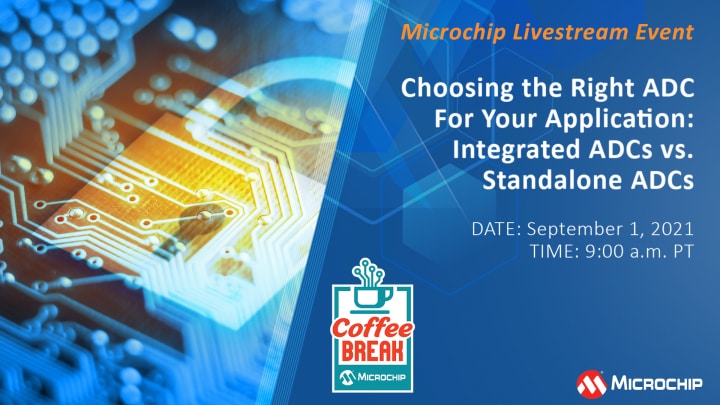Live Chat
Need Help?
Privacy PolicyPerform Dedicated Functions with Special-Purpose ADCs
Special-purpose Analog-to-Digital Converters (ADCs) perform dedicated functions such as dual-slope conversion, voltage-to-frequency conversion, frequency-to-voltage conversion, and 3½-digit Binary-Coded Decimal (BCD) and binary conversion. You can combine these devices with other functions such as driving Liquid Crystal Displays (LCDs) or Light Emitting Diodes (LEDs).
We offer ADCs within the dual-slope community that include noise rejection of 50/60 Hz and flexible tradeoffs between conversion speed and resolution. As a result, these devices are suitable for a variety of data acquisition systems such as precision analog signal processors, sensor interfaces, high-accuracy DC measurements, computer peripheral interfaces, portable instruments and more.
In addition, we offer low-power, high-performance, monolithic CMOS 3 ½-digit ADCs that function between BCD and binary converters. Each high-precision converter offers industry-standard interfaces and pinouts that make these devices well suited for applications such as sensor interfaces, process controls, panel meters, instrumentation and more.
Special-Purpose Analog-to-Digital Converters
- Special-Purpose ADCs
- Display ADCs
- Dual Slope ADCs
- BCD and Binary ADCs
- Voltage-to-Frequency ADCs
Featured Special-Purpose ADCs

TC7107A
- 3½ digit ADC
- Direct LED display drive
- Low-drift VREF: 20 ppm/°C

TC7109A
- 12-bit resolution ADC
- Single channel
- 10 Samples Per Second (SPS) dual slope

TC14433A
- 3½ digit ADC
- Single channel
- 25 SPS dual slope
Companion Products

Voltage References
Are you looking for stable voltage references for your data conversion system to help improve accuracy and reduce error? Check out our voltage reference products.

Operational Amplifiers
Are you looking for a complete amplifier solution for your data conversion application? Check out our wide selection of operational amplifiers.
Automotive Analog-to-Digital Converter ICs
Our innovative automotive-grade mixed-signal products are designed to fit small footprints, consume very little power and operate in high-temperature and electromagnetic environments.

Integrated ADCs vs. Standalone ADCs
The importance of Analog-to-Digital Converters (ADCs) is growing, leaving the designer forced to evaluate whether they should choose a microcontroller with an integrated ADC to meet their system requirements or if they should use a standalone ADC. In this episode of Coffee Break, we will discuss the difference between integrated and standalone ADCs.
